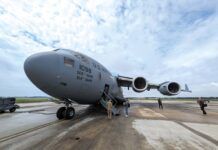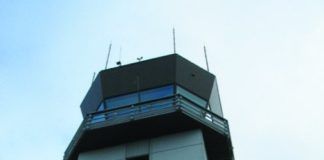For this look, we’ll cover about half of the reports other than position reports per 14 CFR 91.183(a) that Fred Simonds briefly mentions in his “Radar Service Gotchas” on page 14. We’ll thoroughly cover those later.
The other reports generally come from three sources: 14 CFR 91.183 (specifically paragraphs b and c), 91.187 and AIM 5-3-3. Section i5-3-1 n the AIM is largely about technique in communicating with ATC, while 5-3-2 goes into detail regarding the position reports required by 91.183(a). AIM 5-3-3 is titled “Additional Reports” and I’ve found it to be badly overlooked by many pilots.
Reports…To Whom?
A closer look at AIM 5-3-3 reveals the header for paragraph 1, in bold font no less: “The following reports should be made to ATC or FSS facilities without a specific ATC request” [emphasis added]. This means that you are not compelled by this section of the AIM to, for instance, report the final approach fix inbound on CTAF.
Your first choice should be to report to ATC, but if you’re out of radio contact with ATC and can reach FSS, you should relay your report through FSS.
Now, AIM 4-1-10 (a) says: “When operating in accordance with an IFR clearance and ATC approves a change to the advisory frequency, make an expeditious change to the CTAF and employ the recommended traffic advisory procedures.” The summary of recommended communications procedures, outlined in AIM Table 4-1-1, says only to report the final approach fix inbound when conducting practice approaches.
AIM 4-1-9(g) goes into more detail and illustrates that one of the concerns specific to practice approaches is the higher likelihood of opposite direction traffic. Practicing an ILS to the local non-towered airport while the opposite direction calm-wind runway is being used is permitted, but does require extra vigilance and the flexibility to bail and go somewhere else when the environment turns target-rich.
You’re less likely to encounter opposite direction traffic when the field is IFR, but that doesn’t mean it can’t happen. Don’t forget, those operating below the transition area or other Class E, can be running around in one-mile visibility and clear of clouds without talking to anyone, so stay vigilant on breakout.
This isn’t all to say that you shouldn’t report FAF inbound on CTAF when conducting an instrument approach—you can report whatever you feel is prudent. It’s just not required.
Yet Another Mnemonic
Some of you may have been taught an unwieldy, but cleverly ironic, mnemonic to learn your required IFR reports—MARVELOUS VFR 500. This mouthful is what is commonly used to try and consolidate all of the reports the AIM and regulations require.
A standard maxim in aviation is that the utility of mnemonics is inversely proportional to the number of letters in them, making this particular example a good brain teaser. (Go ahead and review A TOMATO FLAMES right now and see how long it takes you—if you even remember it at all.) One of the issues I have with MARVELOUS VFR 500 is that it doesn’t separate reports into appropriate categories. Some reports are required all the time, while others are only required when not in radar contact.
If you can add an appendix to the required report which indicates its source and/or the circumstances of its requirement, more power to you. However you memorize this information, reporting this information should be a no-brainer and as automatic as calling ground control for a taxi clearance or telling the CTAF you’re entering the downwind. Let’s break down the mnemonic, complete with sources and additional details. In this first installment, we’ll handle the first six letters of the mnemonic: “MARVEL”.
Missed Approach
AIM 5-3-3 a.1(d): You are required to report to ATC or FSS (nothing there about CTAF, unicom, etc.) that an approach has been missed and to request a clearance for whatever you want to do next—try another approach, bug out for the alternate, etc. Missed approach is a very busy time, and having your attention inappropriately divided by trying to communicate a plan that you haven’t formed yet just won’t do. Before you go FAF inbound, you had better know what you’re going to do should you not be able to land, making communicating that plan as easy as pitch up, power up, clean up.
Airspeed Changes
AIM 5-3-3 a.1(e): If your average true airspeed at cruising altitude varies by 5 percent or 10 knots, whichever is greater, inform ATC or FSS as appropriate. First of all, if you’re going less than 200 KTAS in cruise, 10 knots is going to be greater than 5%, and vice versa. Secondly, this is average true airspeed in cruise. Going a buck fifty downhill when you filed for 130 doesn’t count, and neither does throttling back for five minutes on a two-hour flight because you’re about to penetrate an unavoidable cauliflower top. If you throttle back for a long stretch in order to increase your range thanks to a headwind, or you push it up to “rental power” because you’ve got two extra hours of fuel and you’re running late, then you should say so.
Reaching a Holding Fix
AIM 5-3-3 a.1(f): The number one misunderstanding with this one is that it says “upon reaching a holding fix or point to which cleared,” not “established in a hold.” If you hit the fix and start a teardrop or parallel entry, you’ve reached the holding fix. Report. With a good wind and lack of practice, it might take you 15 minutes to get “established” and that kind of defeats the purpose of the report.
At the very least, this should prompt an EFC time from ATC if you haven’t gotten one already. Also, you should be reporting the time and altitude (or flight level if you are in Class A airspace) upon reaching the fix. Time should be given in full Zulu time; however, I’ve heard ATC accept “at two-zero past” or “at this time” without complaint. Proper technique demands the full time be read out, though.
Another common misunderstanding, as is true for many of these reports, is thinking this report is not necessary in radar coverage. Wrong. They are required at all times.
Vacating an Assigned Altitude
AIM 5-3-3 a.1(a): The full text dictates that we report vacating a previously assigned altitude for a newly assigned altitude. It doesn’t say anything about published altitudes so, for instance, leaving the initial approach altitude for an intermediate approach altitude wouldn’t be a required report unless it was requested by ATC.
There are instances where we have some freedom in our altitude selection, even under IFR: VFR-on-top, cruise clearances and pilot’s discretion descents are some examples. If the altitude you are presently at was assigned by ATC, you are compelled to report leaving it. That would seem to invite a whole lot of silent altitude variation on a VFR-on-top flight; however, remember (spoiler alert) there are two “V”s in our mnemonic.
Another note about radar coverage is in order. It doesn’t matter. So, when the controller says, “Descend and maintain six-thousand,” you should reply, “Leaving eight-thousand for six-thousand.” Almost everybody gets this one wrong, but there’s no wiggle room. Report leaving…
ETA Change
AIM 5-3-3 a.2(b): This reference comes from AIM 5-3-3 Paragraph 2, under “those reports required only when not in radar contact.” In the non-radar world, where ATC has to rely on accurate position reporting in order to maintain IFR separation, it is critical that your ETA over reporting points (compulsory or not) be accurate.
Even though you might not have had to report a true airspeed variation (“A”), your groundspeed might have changed more than expected, especially when making a course change. Although the wind change that affected you will affect others on your route, ahead and behind, ATC is also timing things so that others may cross your next fix at right or oblique angles. ATC predicates their separation on your estimate to preclude aviators from commenting on one another’s paint schemes.
Leaving a Holding Fix
AIM 5-3-3 a.1(g): I can’t tell you how many times I’ve had students in the aircraft or the simulator give me a (well-deserved) self-satisfied smirk when they report over a holding fix (“R”), only to remain silently smug as they depart that hold for the next fix or route.
Yes, I know sarcasm has no place in flight training (though the “Aviation Instructor’s Handbook” only mentions this in light of guided discussions), but I can’t help the occasional “So…N12345, did you leave the hold yet?” as the holding fix disappears from the moving map display. I deserve the withering looks I get for such a comment, but on the next lesson, they usually give me a how-do-you-like-me-now “leaving the hold” report. Hey, whatever works, right?
We’ve made it through MARVEL on our first swing. Next clinic, we’ll finish with OUS VFR and then break things down a little differently for those who are not keen on mnemonics or want things parsed out by radar vs. non-radar, etc.
Evan Cushing, a reformed regional airline training captain, now helps run a collegiate aviation program. He is only occasionally sarcastic and tends to avoid long mnemonics whenever possible.




